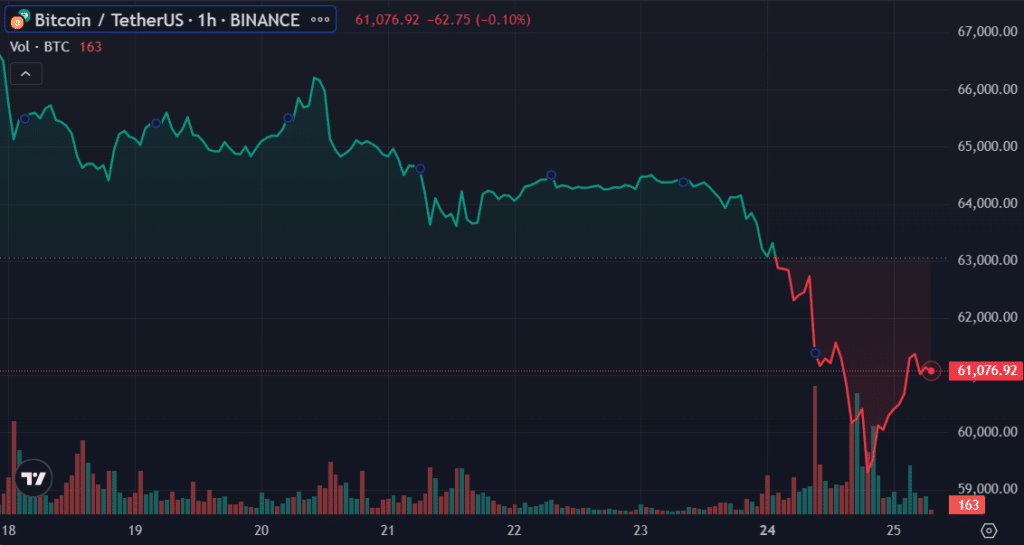Spot Bitcoin (BTC) exchange-traded funds (ETFs) in the U.S. have begun their third week of sustained negative net flows as the BTC price slumps below $60,000.
According to data provided by Farside investors, the amount of spot BTC ETF outflows reached $174.5 million on June 24. The negative net flows were majorly driven by the Grayscale Bitcoin Trust (GBTC), a trend observed in the early trading days of the investment products and in recent times.
Notably, GBTC recorded outflows totaling $90.4 million, the largest since June 11. Meanwhile, other spot Bitcoin ETFs further bolstered the cumulative negative netflow data, with no product witnessing any inflow yesterday. The last time this pattern occurred was on June 11, but the majority of ETFs then traded flat.
This time, up to seven products witnessed outflows, with the Fidelity Wise Origin Bitcoin Fund (FBTC) seeing the second-largest outflow at $35.2 million. The Franklin Bitcoin ETF (EZBC) came third on the bearish metric, with $20.9 million in negative net flows.
Interestingly, BlackRock’s iShares Bitcoin Trust (IBIT) bucked the negative trend, managing to maintain zero flows on June 24. Remarkably, IBIT has hedged against any negative flows amid the ongoing market bloodbath. The last time the product saw a negative netflow was on May 1, when it recorded a net outflow of $36.9 million.
Following the latest performance, cumulative net flows on spot Bitcoin ETFs have dropped to $14.38 billion. Recall that this figure collapsed below the $15 billion mark on June 17 after recording $145.9 million in negative net flows. The recent data marks the seventh consecutive day of consecutive net outflows from these products.
This bearish turn of events comes when Bitcoin is struggling to fight off the prevalent bearish pressure. Bitcoin is up by 0.8% and is trading at $60,772 at the time of writing. The mild recovery effort follows a 4.61% drop the previous day.

It’s important to note that BTC briefly broke below $60,000 yesterday, hitting a one-month low of $58,402 before setting up a rebound.
This article first appeared at crypto.news
